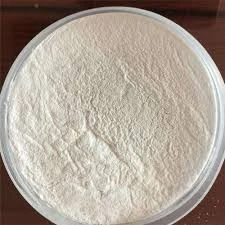
Dec . 17, 2024 05:40 Back to list
hpmc types
HPMC Types A Comprehensive Overview
Hydroxypropyl Methylcellulose (HPMC) is a versatile synthetic polymer derived from cellulose, widely used in various industries ranging from pharmaceuticals to construction. Its unique properties, including water solubility, film-forming abilities, and emulsification, make HPMC a pivotal compound in many applications. Understanding the different types of HPMC is essential for selecting the right product for your specific needs.
Types of HPMC
HPMC is classified based on its viscosity, methylene content, and substitution levels. The primary types of HPMC include
1. HPMC K Series This series is characterized by its high viscosity and a significant degree of methoxy substitution. HPMC K is often used in pharmaceutical formulations, such as controlled-release tablets, due to its ability to regulate the release of active ingredients. The K series is ideal for applications requiring thickening properties and stability in a variety of pH levels.
2. HPMC E Series The HPMC E series has a lower viscosity compared to the K series and is primarily used in food and cosmetic applications. This type is particularly favored as a thickener and stabilizer in products like sauces, dressings, and creams. The E series is known for its excellent dispersibility in water, making it suitable for instant products.
3. HPMC M Series The M series of HPMC is defined by its intermediate viscosity and is typically used in building materials, particularly in dry mortar mixes and tile adhesives. The M series helps improve workability, adhesion, and water retention in construction applications.
4. HPMC L Series The L series features low viscosity and is primarily utilized in the pharmaceutical sector for purposes such as tablet coating and as a lubricant in various formulations. Due to its low viscosity, the L series allows for easy processing and good flow characteristics in powder formulations.
hpmc types

Applications of HPMC
The various types of HPMC serve a multitude of applications
- Pharmaceuticals HPMC is widely used in the pharmaceutical industry for drug delivery systems, including tablets and capsules. Its unique properties allow for sustained-release formulations, enhancing patient compliance.
- Food Industry In food processing, HPMC is employed as a thickener, stabilizer, and emulsifier. It is commonly found in sauces, dairy products, and low-fat foods, providing a desirable texture and mouthfeel.
- Cosmetics HPMC is a popular ingredient in cosmetic formulations, acting as a thickener and film-forming agent. It is used in creams, lotions, and gels, providing a smooth application and enhancing product stability.
- Construction The construction industry benefits from HPMC's water-retention properties, which are essential for adhesives, mortars, and drywall compounds. Its ability to improve workability and performance makes it a valuable additive in building materials.
Conclusion
Hydroxypropyl Methylcellulose is an essential polymer with diverse applications across numerous industries. The classification of HPMC into different series—K, E, M, and L—allows manufacturers and formulators to choose the appropriate type based on their specific requirements, whether it’s for pharmaceuticals, food products, cosmetics, or construction materials. As industry needs evolve, the demand for tailored HPMC formulations will likely continue to rise, underscoring the significance of understanding the different types and their corresponding applications. By selecting the right type of HPMC, businesses can enhance product performance while meeting regulatory standards and consumer expectations.
-
Versatile Hpmc Uses in Different Industries
NewsJun.19,2025
-
Redispersible Powder's Role in Enhancing Durability of Construction Products
NewsJun.19,2025
-
Hydroxyethyl Cellulose Applications Driving Green Industrial Processes
NewsJun.19,2025
-
Exploring Different Redispersible Polymer Powder
NewsJun.19,2025
-
Choosing the Right Mortar Bonding Agent
NewsJun.19,2025
-
Applications and Significance of China Hpmc in Modern Industries
NewsJun.19,2025







